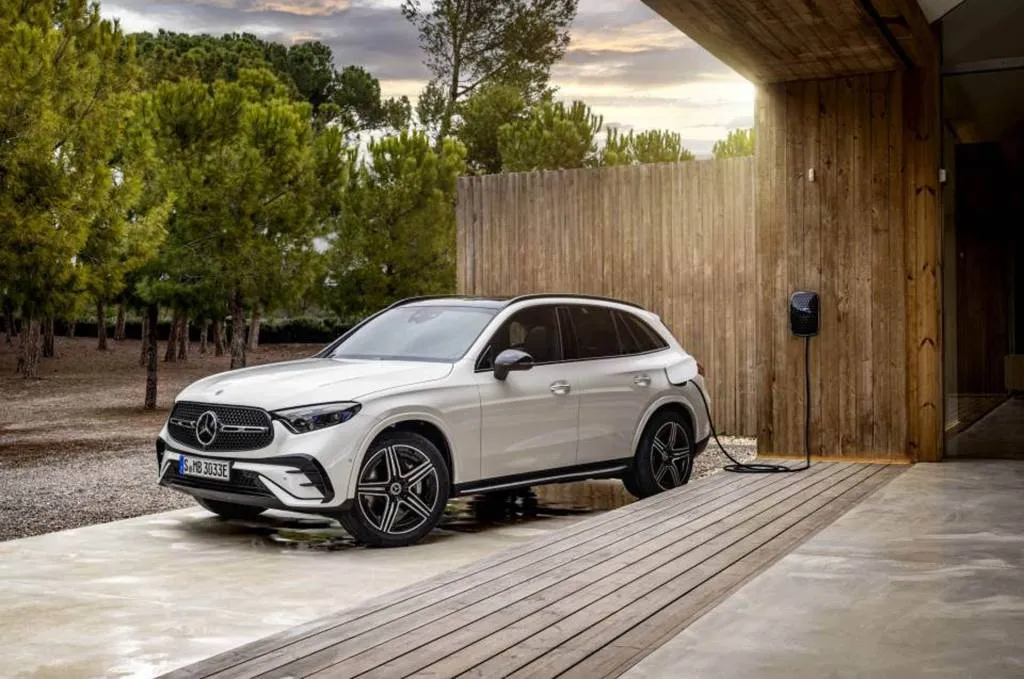A new European study finds that plug-in hybrids pollute more than advertised, while in the U.S. the EPA appears ready to give them more emissions leeway.
The European Commission study showed that new plug-in hybrids registered in 2021 averaged emissions of 139.5 grams of CO2 per kilometer, which was 3.5 times higher than what Europe’s WLTP regulatory testing protocol indicated.
The real-world emissions of plug-in hybrids are dependent on how often they’re plugged in and driven on electric power, the study noted. The WLTP testing cycle aims to account for this with a “utility factor” that tries to anticipate distances driven in electric mode. But it seems that utility factor was overly optimistic.

2025 Mercedes-Benz GLC-Class (GLC 350e)
Previous studies have reached similar conclusions. A 2022 study from the International Council on Clean Transportation (ICCT) found, real-world electric miles for plug-in hybrids may be up to 65% lower than what regulators assume, with fuel consumption up to 67% higher. Another study from Transport & Environment in 2020 also found that plug-in hybrids are polluting more than claimed.
The EPA, citing some of the various pieces of evidence suggesting this low rate of plugging in, proposed adjusting for low electric mileage in plug-in hybrids with its latest emissions regulations, in the form of the Fleet Utility Factor. But in one of many compromises to legacy automakers in the final version of the regulations, implementation has been pushed back.
Last week the EPA said it was delaying the Fleet Utility Factor from the 2027 model year to the 2031 model year “to provide additional stability for the program, and to give manufacturers ample time to transition to the new compliance calculation for PHEVs.”

2021 BMW X5 xDrive45e
Meanwhile U.S. plug-in hybrid sales hit a record high in 2023, reaching more than 250,000 sales and accounting for about 20% of total plug-in vehicle sales, according to the Department of Energy. They’re expected to keep climbing given the way the EPA final rule incentivizes them.
While plug-in hybrids are expected to surge in the U.S. as the result of the policy turn, Europe is headed in the other direction. It’s shifted largely from internal-combustion vehicles directly to EVs, and regulators have considered effectively discouraging PHEVs with policy.

